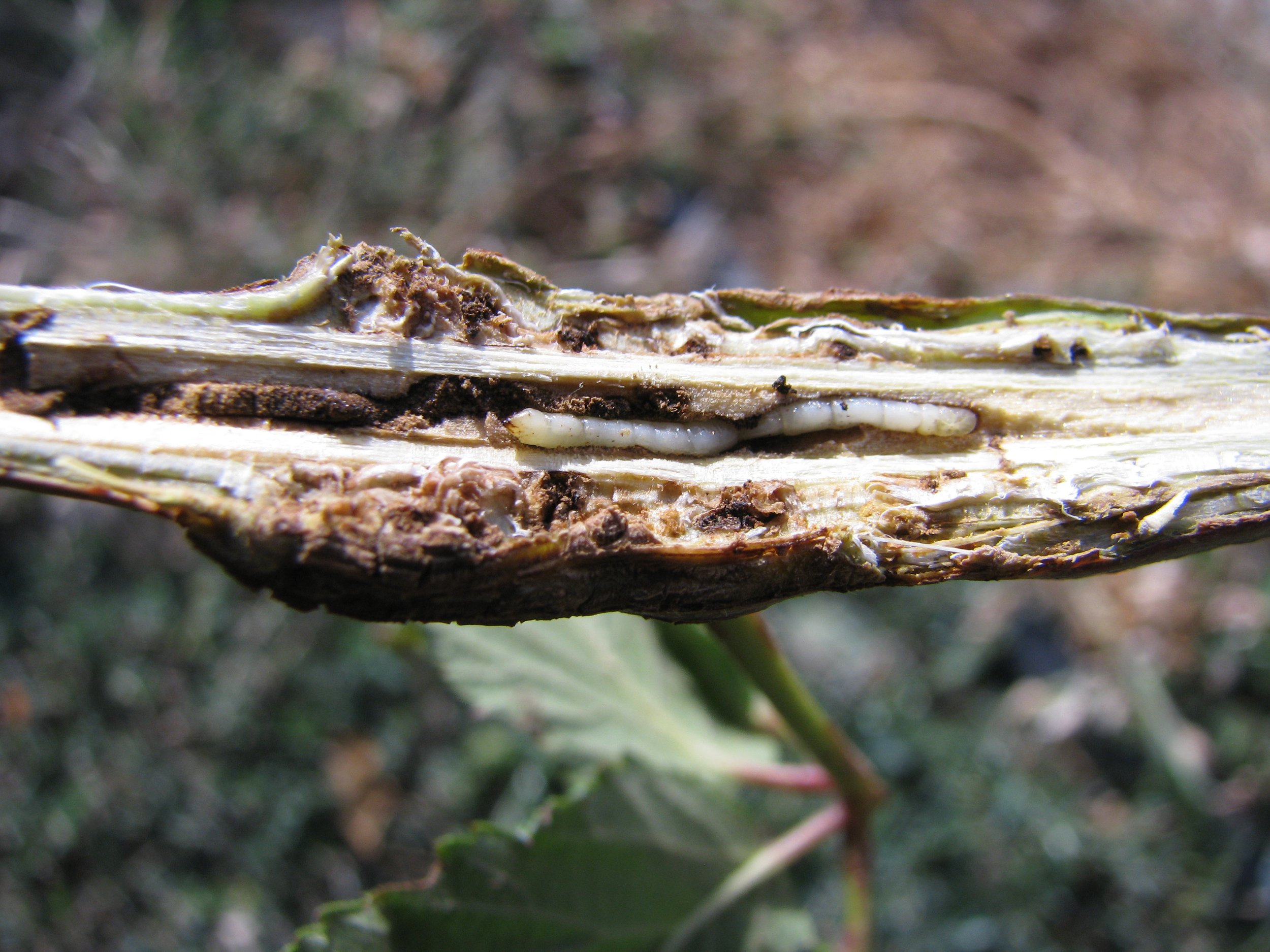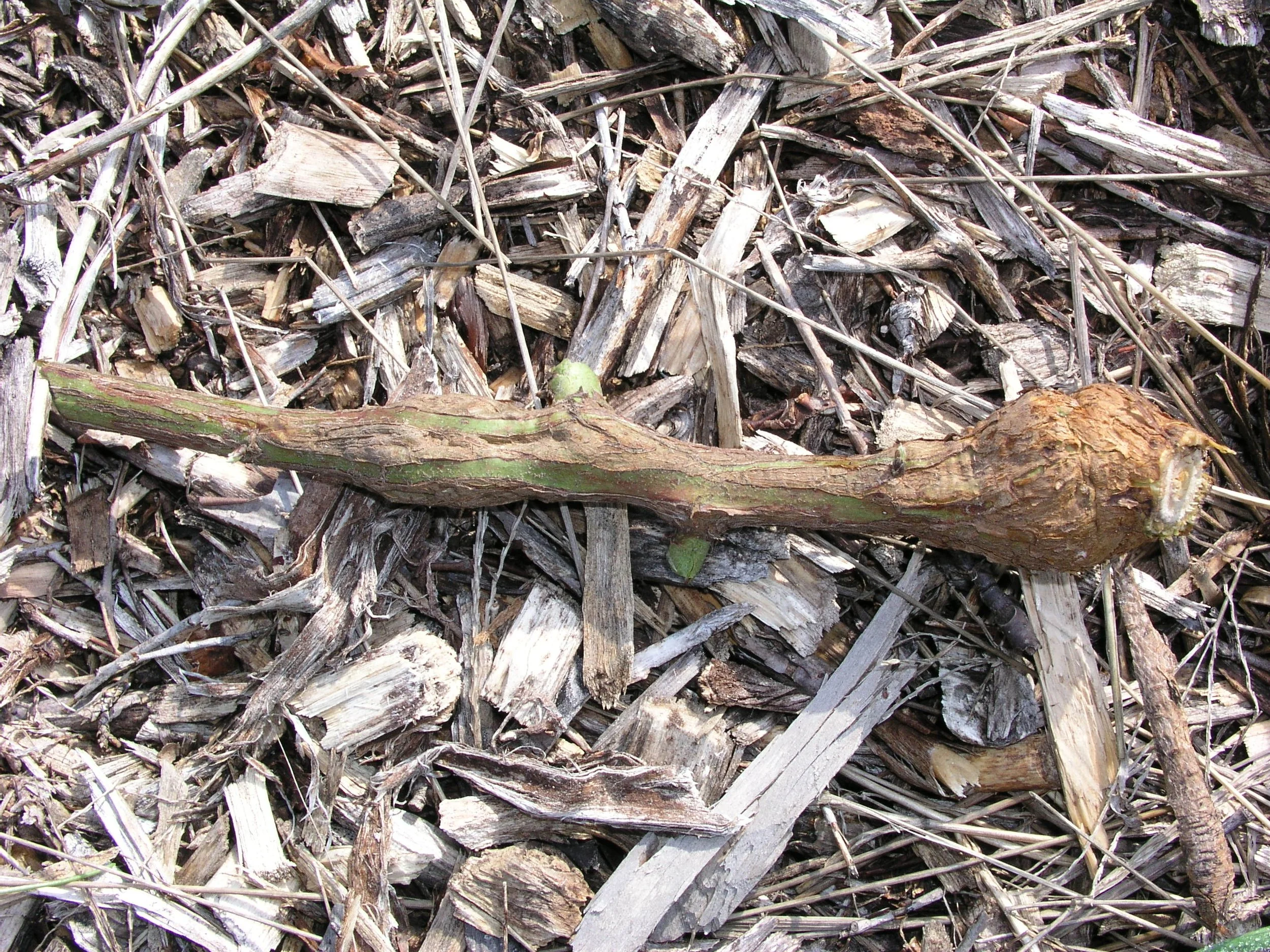The rednecked cane borer is a beetle that infects brambles such as black raspberries and blackberries. The beetles attack foliage, and the larvae cause galls that split the bark of the cane.
For region-specific information, please contact your local Giving Grove partner. If you would like more information like this sent straight to your inbox, consider subscribing to The Serving, The Giving Grove’s quarterly newsletter.
Appearance:
Adults are small metallic wood-boring beetles, with a reddish area behind the head.
Larvae are white, legless, and flat behind the head
Pupae are about the same length and shape as adults
Overwinters in the canes as larvae
Damage:
Adult feeding leaves irregular holes in the foliage.
Larval feeding causes galls that can cause bark to split and stems to break.
Infected canes can die or become weak and unable to support the fruit.
Damaged canes are more susceptible to injury during the winter months.
If left untreated, rednecked cane borers can infect a majority of the canes, significantly impacting yield.
Management & Treatment:
Look for a faint brown-green line circling damaged stems in mid-summer. Snip below the affected areas.
A slight S curve is an indication of infected canes; crippled leaves may surround the area.
Split the cane at the gall to find overwintering grubs.
Prune and destroy infested stems as soon as galls are visible.
Look for adult beetles during daylight hours in early to mid June.
Parasitic wasps and fungal diseases are effective controls.
References: NC State Extension, UK College of Agriculture, Food & Environment, Michael Phillips, “The Holistic Orchard”, and Patrick L. Byers, Horticulture Specialist




